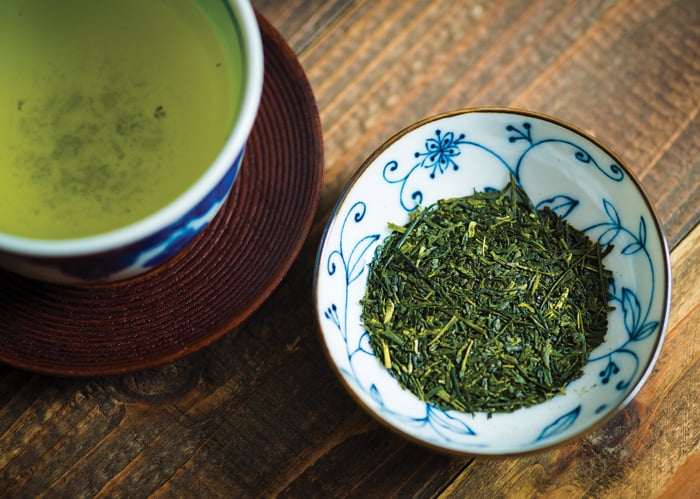A World of Nutrition
Nutraceuticals | APPLIED SCIENCE
Global cuisines have exposed us to a multitude of flavors, colors, and textures that excite our taste buds and take us on culinary adventures. When it comes to health and wellness, cultural diets can also spark ideas for food product development and nutritional ingredients that can benefit overall health.
Mediterranean Diet
The well-known Mediterranean diet originated from the observation that heart disease was not as common in Mediterranean countries, including Greece, Italy, and other countries that border the Mediterranean Sea. The diet focuses on a variety of fruits, vegetables, whole grains, beans, and healthy fats, particularly olive oil. Dairy intake is moderate (mainly cheeses and yogurts), and fish and poultry are consumed in low or moderate amounts. Red meat and sweets are consumed infrequently and in small amounts. Moderate consumption of wine is also part of the Mediterranean diet. Some bioactive compounds in this dietary lifestyle include vitamins, minerals, polyphenols, fiber, polyunsaturated fatty acids (particularly omega-3), and monounsaturated fatty acids that, in combination or separately, are beneficial to health (Andreo-Lopez et al. 2023).
In a recent scientific statement, the American Heart Association (AHA) stated that the Mediterranean diet is one dietary pattern that is well aligned with its 2021 AHA Dietary Guidance (Gardner et al. 2023). Other dietary patterns that were ranked as well-aligned included DASH (Dietary Approaches to Stop Hypertension), pescatarian, and vegetarian (ovo, lacto, ovo/lacto). All are rich in vegetables, fruits, whole grains, and plant-protein sources. Key differentiating factors are that Mediterranean-style diets explicitly emphasize plant-based oils, especially extra-virgin olive oil, and moderate alcohol consumption.
In addition to its recognized heart health benefits, research supports a Mediterranean diet’s potential cognitive benefits. Most recently, Agarwal et al. 2023 showed a link between this diet and Alzheimer’s disease. People who consumed foods from the plant-based Mediterranean and MIND (Mediterranean-DASH Diet Intervention for Neurodegenerative Delay) diets had fewer of the signs of Alzheimer’s, beta-amyloid load and phosphorylated tau tangles in the brain, when autopsied. Among dietary components, green leafy vegetables inversely correlated with Alzheimer’s disease pathology.
Aside from being more plant- and healthy-fat focused, it’s believed that the phytochemicals consumed in a Mediterranean diet help contribute to its benefits. Ingredient companies have focused on some of these and created Mediterranean-based ingredients. PLT Health, for example, offers Hytolive olive extract, a solvent-free natural extraction of olive polyphenols from the byproduct water of olive oil production. The primary active component of Hytolive, hydroxytyrosol is a polar, phenolic phytochemical found in olive fruit, olive leaf, and olive oil as well as byproducts of olive processing. Along with tyrosol and its conjugates, it represents the main phenolic compounds in olive oil (50%) and has natural antioxidant activity.
At this year’s Vitafoods Europe, Euromed presented its new line of fruit and vegetable extracts, drawing inspiration from the healthy aging properties of the Mediterranean diet and the phytochemicals found in these natural sources. The extracts are made using locally and sustainably sourced Spanish pomegranates, olives, artichokes, figs, lemons, and spinach, each carefully selected for its unique and evidence-based health benefits and gently processed with the company’s proprietary, eco-friendly extraction process.
Korea
Kimchi, a Korean dish, is becoming more popular as interest in both Korean cuisine and fermented foods is on the rise. It is made by combining Napa cabbage, scallions, or radishes in a brine with garlic, ginger, chili pepper, and fish sauce and allowing them to ferment. Because it’s a fermented dish, it contains probiotic lactobacilli and has been shown to benefit digestive health. In addition to its probiotic benefits, kimchi also provides dietary fibers, minerals, vitamins, capsaicin, organic acids, polyphenols, and fermentation byproducts (organic acids, bacteriocins, and others).
Kimchi also has been studied for its ability to modulate gut microflora and benefit gastrointestinal issues. Presence of a wild and acid-resistant microbiota is connected to the lowering of pH in the intestinal lumen and in the feces, which is connected to a better microbiota, with an increased count in lactic acid bacteria and Bifidobacteria and a lower level of harmful and pathogenic microorganisms (Castellone et al. 2021).
Amazon
Açaí is native to several countries in the Amazon region of tropical Central and South America. The popular fruit is touted for its antioxidant properties. The fruit presents a rich phytochemical profile composed of phenolic compounds, quinones, terpenes, and norisoprenoids, all of which are related to its health-promoting and disease-preventing potential. In vitro and in vivo studies have shown that açaí possesses antioxidant and anti-inflammatory properties and exerts cardioprotective, gastroprotective, hepatoprotective, neuroprotective, and renoprotective activities. In addition, clinical trials have suggested that açaí can protect against metabolic stress induced by oxidation, inflammation, vascular abnormalities, and physical exertion (Laurindo et al. 2023).
Guarana (Paullinia cupana) is another popular plant from the Amazon region. It, too, has shown anti-inflammatory and antioxidant activities, thanks in part to its flavonoid content. Guarana also contains caffeine, so it is used in several energy beverages as a natural source of caffeine.
Japan
Japanese matcha is a type of powdered green tea, grown in a traditional way. Shading of the plants during the growth period enhances the processes of synthesis and accumulation of biologically active compounds, including theanine, caffeine, chlorophyll, and various types of catechins. Green tea contains four main catechins, with epigallocatechin-3-gallate (EGCG) being the most active and abundant (Kochman et al. 2020). Matcha’s health-promoting properties are attributed to the high content of antioxidant and anti-inflammatory substances. Drinking green tea has been associated with heart health and cognitive function.
In a small study of 42 people, Baba et al. (2021) suggested that matcha might improve cognitive function during or after stress conditions in young adults. Participants aged 25 to 34 years consumed 2 g of matcha daily for two weeks. The Uchida–Kraepelin test was used to induce mild acute psychological stress. After two weeks of matcha intake, the attentional function was maintained after mild acute psychological stress.
Because catechins from green tea are believed to contribute to its health benefits, ingredient companies have been able to extract them and offer them as ingredients for supplements, beverages, and food. Taiyo’s Sunphenon EGCg and Teavigo, for example, are 100% natural green tea extracts having high purity decaffeinated EGCG (epigallocatechin gallate). They contain more than 94% of this major catechin. Sunphenon is produced from green tea leaves (Camellia sinensis) that is first extracted via a water infusion process.
India
Turmeric is a golden-orange spice known for adding color, flavor, and nutrition to foods. It has been used in Ayurvedic and other forms of traditional medicine in China and India for treatment of chronic diseases, including metabolic and cardiovascular diseases (CVD). Curcuminoids and essential oils are known as two major groups that display bioactive properties in turmeric. Curcumin is the most predominant curcuminoid present in turmeric (Zhang and Kitts 2021). It is used for its anti-inflammatory and antioxidant effects.
Ashwagandha is an important herb in Ayurvedic medicine, used for energy and to reduce inflammation, pain, and anxiety. Speers et al. (2021) reviewed preclinical and clinical studies examining the neuropsychiatric effects of Withania somnifera, also known as ashwagandha, specifically its application in stress, anxiety, depression, and insomnia. Ashwagandha root and leaf extracts exhibited noteworthy anti-stress and anti-anxiety activity in animal and human studies. The authors, however, noted that while benefits were seen in the reviewed studies, significant variability in the extracts examined prevents a consensus on the optimum ashwagandha preparation or dosage for treating neuropsychiatric conditions. They also noted that it would be important to investigate potential herb-drug interactions involving ashwagandha if used alongside pharmaceutical interventions.
Traditional Chinese Medicine
Traditional Chinese medicine includes acupuncture, tai chi, and herbal products. Some of the more popular Chinese herbs include ginseng, ginger, goji berry, and reishi mushrooms. Ginseng is used in energy drinks for increased mental focus and to combat fatigue. Ginger is recommended for its digestive health benefits and anti-inflammatory properties. Goji berries are known for their antioxidant and anti-inflammatory properties, as well as a source of fiber, iron, and vitamins A and C. Reishi mushrooms are among several popular medicinal mushrooms that have history in treating infections. They are known for their immune-boosting and stress-reducing properties.
A World of Opportunity
All these fruits, botanicals, and culinary cuisines show how cultural diets affect health and wellness. As trends point to an ever-increasing demand for nutritious foods that incorporate global flavors and functional ingredients, product developers will find plenty of opportunity to create delicious food products that pack a health-and-wellness punch.
Learning Objectives
- Different cultural cuisines and dietary lifestyles shed light on nutritional foods and ingredients.
- A Mediterranean diet, known to be heart-healthy, focuses on a variety of fruits, vegetables, whole grains, beans, and healthy fats, particularly olive oil, andmoderate wine consumption.
- Learn how ingredients from the Amazon, Japan, Korea, India, and China benefit overall health.








